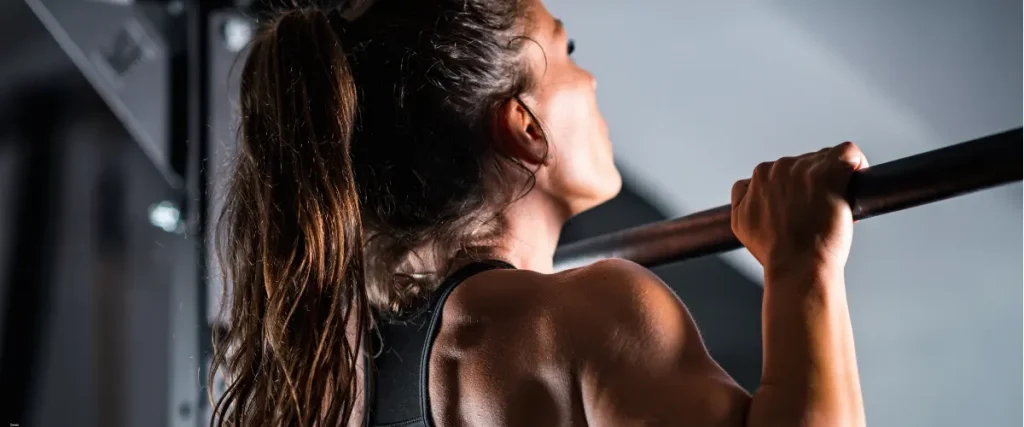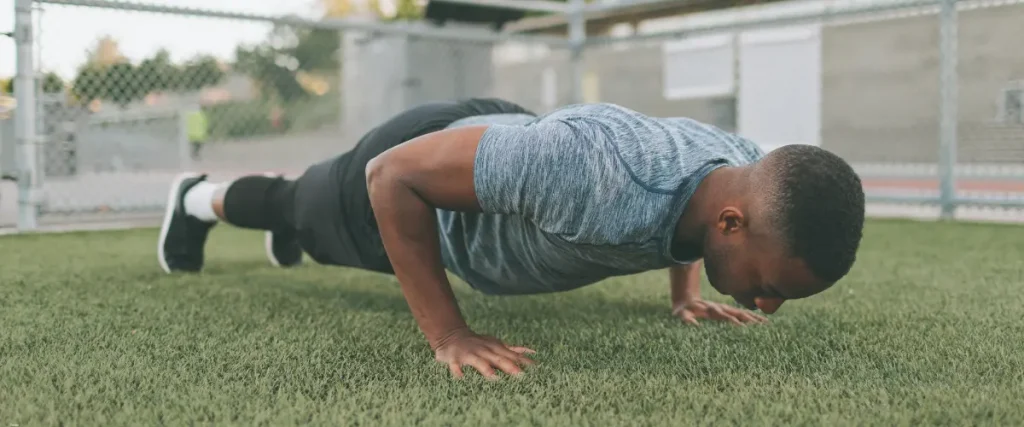
A bone density scan, also known as a DEXA body scan, is a medical test that measures the density of minerals (such as calcium) in your bones. This examination is crucial because it helps determine the strength and thickness of your bones, which are key indicators of bone health. The primary reason for conducting this test is to diagnose and monitor various bone-related conditions, including osteoporosis, a condition where decreased bone strength increases the risk of a broken bone.

Understanding DEXA Technology
How DEXA Scans Measure Bone Mineral Density (BMD)
Dual-energy X-ray absorptiometry (DEXA) scans are advanced imaging tests that use very low levels of X-ray energy to assess bone density. The scanner emits two different energy beams. The absorption of these beams by the bones being scanned is measured, and from this data, a detailed image is created that shows the density of the bone. This information is then compared against standard density levels to determine if your bones are within a normal range, below normal, or show significant bone loss.
Accuracy and Precision of DEXA Technology
DEXA technology is renowned for its high level of accuracy and precision in measuring bone density. This precision is critical when diagnosing osteoporosis and other conditions that affect bone health. The ability to detect small changes in bone density over time makes DEXA an invaluable tool in both the initial diagnosis and the ongoing bone health monitoring. These traits ensure that healthcare providers can rely on DEXA scans for making informed decisions regarding a patient’s bone health and required treatments.
Comparison with Other Bone Density Assessment Methods
Other common methods such as CT scans and ultrasound also play significant roles in bone health assessment but come with certain drawbacks. CT scans, for instance, provide detailed images and are excellent for evaluating bone architecture, but they expose patients to higher levels of radiation, which can be a concern with repeated use. Ultrasound, while being a portable and radiation-free option, generally lacks the precision of DEXA. It measures bone density indirectly by assessing properties like the speed of sound through bone, which can be influenced by factors other than bone mineral content, potentially affecting accuracy and reliability. Ultrasound is often used as a screening tool rather than a definitive diagnostic measure.
Emerging technologies and improvements in existing methods continue to enhance our ability to assess bone density. Quantitative computed tomography (QCT) is a notable example, offering three-dimensional imaging that can provide a volumetric measurement of BMD, which is especially useful in evaluating trabecular bone, a spongy type of bone that is more metabolically active and thus more sensitive to changes. However, QCT also involves higher doses of radiation compared to DEXA.
The Bone Density Test Process
Preparing for a Bone Density Exam
Patients are typically advised to avoid taking calcium supplements for at least 24 hours before the test. It’s important to wear loose, comfortable clothing without any metal fasteners, zippers, or buttons, as metal can interfere with the imaging process. Patients should inform their healthcare provider about any recent barium examinations or injections of contrast material for other tests, as these can affect the bone density test results. Additionally, informing the technician about any hip or spine surgeries is crucial because these areas are often the focus of the scan.
What to Expect During the Procedure
When preparing for a medical imaging procedure, understanding each step of the process can help alleviate anxiety and set realistic expectations. Here’s a breakdown of what you might experience:
- Arrival and Check-In: Upon arriving at the medical facility, your first point of interaction will be the registration desk. This is where you’ll present your identification and insurance information. The staff might also require you to fill out some paperwork to record your medical history and any current medications you’re taking. This initial step ensures that all necessary administrative details are settled before the procedure begins.
- Changing Clothes: Once the check-in process is complete, you’ll be directed to a changing area where you will be asked to switch into a hospital gown. This is a standard precaution to prevent any metallic objects you might be wearing from interfering with the imaging equipment. Lockers or secure storage may be provided to keep your personal belongings safe during the scan.
- Positioning on the Scanner: In this phase, a technologist will assist you in lying down on a specially designed, padded table. Correct positioning is crucial as it affects the accuracy of the images produced. The technologist will make sure you are comfortable and positioned correctly, advising you to remain still throughout the scanning process to ensure the best possible results.
- Scanning Process: The scanner itself is a sophisticated piece of equipment that will move around your body, primarily focusing on areas susceptible to conditions like osteoporosis, such as the spine and hips. Unlike MRI machines, this scanner is open, which helps reduce the claustrophobia some patients might feel in enclosed spaces. You will hear some mechanical noise as the scanner works, but there should be no discomfort involved.
- Completion of Scan: The duration of the scan can vary, typically lasting between 10 to 30 minutes, depending on the complexity and number of sites being examined. Once the scan is complete, you may need to wait briefly while the technologist checks the quality of the images. If all is well, you will be allowed to change back into your clothes and leave the facility, unless further images are needed.
Understanding each step of the medical imaging process can significantly ease the stress associated with medical procedures. Knowing what to expect allows patients to prepare mentally and physically, contributing to a smoother overall experience.
Post-Test Analysis and Results Interpretation
After the scanning is complete, a radiologist will analyze the images to assess your bone density. The results are usually available within a few days and will be sent to your doctor, who will discuss them with you. The results of a bone density test are typically reported as T-scores and Z-scores, which compare your bone density to that of a healthy young adult and people of your age and sex, respectively. These scores help determine whether you have normal bone density, low bone mass (osteopenia), or osteoporosis, guiding potential treatment options.

Understanding Your Bone Density Results
Understanding your bone density results is crucial in managing your overall bone health. The T-score is particularly important, as it helps manage osteoporosis. A score of -1.0 or above is considered normal, between -1.0 and -2.5 indicates osteopenia and a score lower than -2.5 is diagnostic for osteoporosis. If your scores show signs of osteopenia or osteoporosis, your doctor may recommend lifestyle changes, medications, or further testing to prevent progression and manage your bone health effectively.
Preventing Osteoporosis with Routine Screenings
Importance of Regular Bone Density Screenings
By establishing a baseline bone density, medical professionals can monitor changes over time and intervene promptly. This proactive approach can significantly diminish the likelihood of osteoporosis developing unnoticed and becoming severe.
At-Risk Populations for Osteoporosis
Certain groups of people are more susceptible to developing osteoporosis, making it essential for them to undergo routine bone density testing. These populations include postmenopausal women, men and women over the age of 65, people with a family history of osteoporosis, those who have experienced early menopause, and individuals on long-term steroid therapy. For these groups, regular screening can mean the difference between catching the condition early and dealing with more severe complications after a fracture occurs.
Lifestyle and Dietary Adjustments for Bone Health
To maintain bone health throughout life, it’s essential to consider a variety of lifestyle and dietary adjustments. These adjustments help in optimizing bone density and strength, ensuring that bones stay healthy and resilient against age-related degeneration and other challenges. Here are some strategies for keeping your bones strong:
- Calcium Intake: Adults typically require between 1,000 and 1,200 milligrams of calcium daily. This can be achieved through a diet rich in dairy products like milk, cheese, and yogurt. For those who are lactose intolerant or vegan, leafy green vegetables such as kale and spinach, as well as calcium-fortified foods like certain cereals and plant-based milk, are excellent alternatives. Integrating these foods into your diet can help maintain the calcium levels necessary for strong bones.
- Vitamin D: Adequate levels of vitamin D ensure that the body can effectively absorb calcium from the diet. Sun exposure is a natural source of vitamin D, with experts recommending moderate sunlight exposure several times a week. However, in regions with limited sunlight, especially during winter months, vitamin D supplements may be necessary to achieve the recommended daily intake, which varies from 600 to 800 IU depending on age and health conditions.
- Regular Exercise: Weight-bearing exercises, such as walking, jogging, and dancing, apply pressure to the bones, which stimulates bone growth and strengthens them. It’s recommended to perform such activities for at least 30 minutes a day. These exercises not only improve bone health but also enhance muscle strength and balance, which can help prevent falls and related fractures.
- Limit Alcohol and Quit Smoking: Consuming excessive alcohol can have a detrimental effect on bone health, as it can interfere with the natural processes of bone growth and repair. Similarly, smoking is linked to decreased bone density and an increased risk of fractures. Reducing alcohol intake and quitting smoking are crucial steps in protecting bone health and ensuring that the bones can regenerate and maintain their strength over time.
- Monitor Protein Intake: While protein is an essential nutrient for overall health, excessive amounts can affect bone density. High protein intake can lead to calcium being leached from the bones, which weakens them. It is important to balance protein consumption with plenty of vegetables and foods rich in calcium to mitigate this effect and promote a healthy bone matrix.
Adopting these strategies into your daily routine can significantly impact your bone health, promoting longevity and reducing the risk of bone-related diseases and conditions. Each of these strategies contributes to a holistic approach to bone health, integrating nutrition, physical activity, and lifestyle changes to support the skeletal system effectively.
Finding and Choosing a Bone Density Scan Facility
Tips for Finding a Reputable Provider
When looking for a facility to conduct your bone density examination, it’s important to choose a reputable provider. Begin by asking your primary care physician for recommendations, as they are likely to know trusted specialists in your area. You can also check with local hospitals or clinics known for their diagnostic imaging services. Ensuring the facility has certified radiologists and technicians who specialize in bone health can give you confidence in the quality of care you will receive. Online reviews and patient testimonials can also provide insights into the experiences of others, helping you make an informed decision.
What to Look for
Look for a center that is equipped with state-of-the-art DEXA scanning technology, as newer machines often provide more accurate and comprehensive results. The facility should maintain a clean and professional environment, indicating that it upholds high standards of care and hygiene. Additionally, the staff should be knowledgeable and able to answer any questions you may have about the procedure, preparation, and follow-up care. Accessibility is another consideration; ensure the location is convenient and that appointment scheduling is flexible to accommodate your needs.
Cost and Insurance Considerations
Understanding the cost of a bone density scan and how it fits within your financial and insurance plans is crucial. Contact your insurance provider to determine if the scan is covered under your policy, and if so, what portion of the cost you will be responsible for. Some facilities offer payment plans or discounts for uninsured patients, so it’s worth inquiring about these options. Be sure to get a clear estimate of the total cost upfront, including any additional fees for interpretation of results or follow-up appointments.
Advancements in DEXA Scan Technology
Recent Innovations
Recent advancements in DEXA scan technology have significantly enhanced the ability to assess bone health with greater precision and detail. Innovations such as high-definition scanners and advanced software algorithms have improved the accuracy of bone mineral density measurements. These new technologies can provide more detailed images that allow for better differentiation between bone types and more precise localization of bone loss. Advancements in data processing have enabled quicker scan times and immediate result availability, which streamlines the diagnostic process and allows for faster clinical decision-making.

Future Trends
Emerging trends include the integration of artificial intelligence and machine learning to interpret scan data more efficiently and accurately. These technologies can identify patterns and predict outcomes that might not be apparent through traditional analysis. Moreover, there is growing interest in developing portable DEXA scanners, which would make bone mineral density tests more accessible in remote or underserved areas.
Effective management and osteoporosis prevention rely heavily on regular bone health assessments and a proactive approach to health care. Bone density scans play a vital role in this process by offering a reliable method for detecting bone loss early and monitoring changes over time. By staying informed and proactive, individuals can significantly enhance their bone health and reduce the risk of osteoporosis, leading to a healthier, more active life.